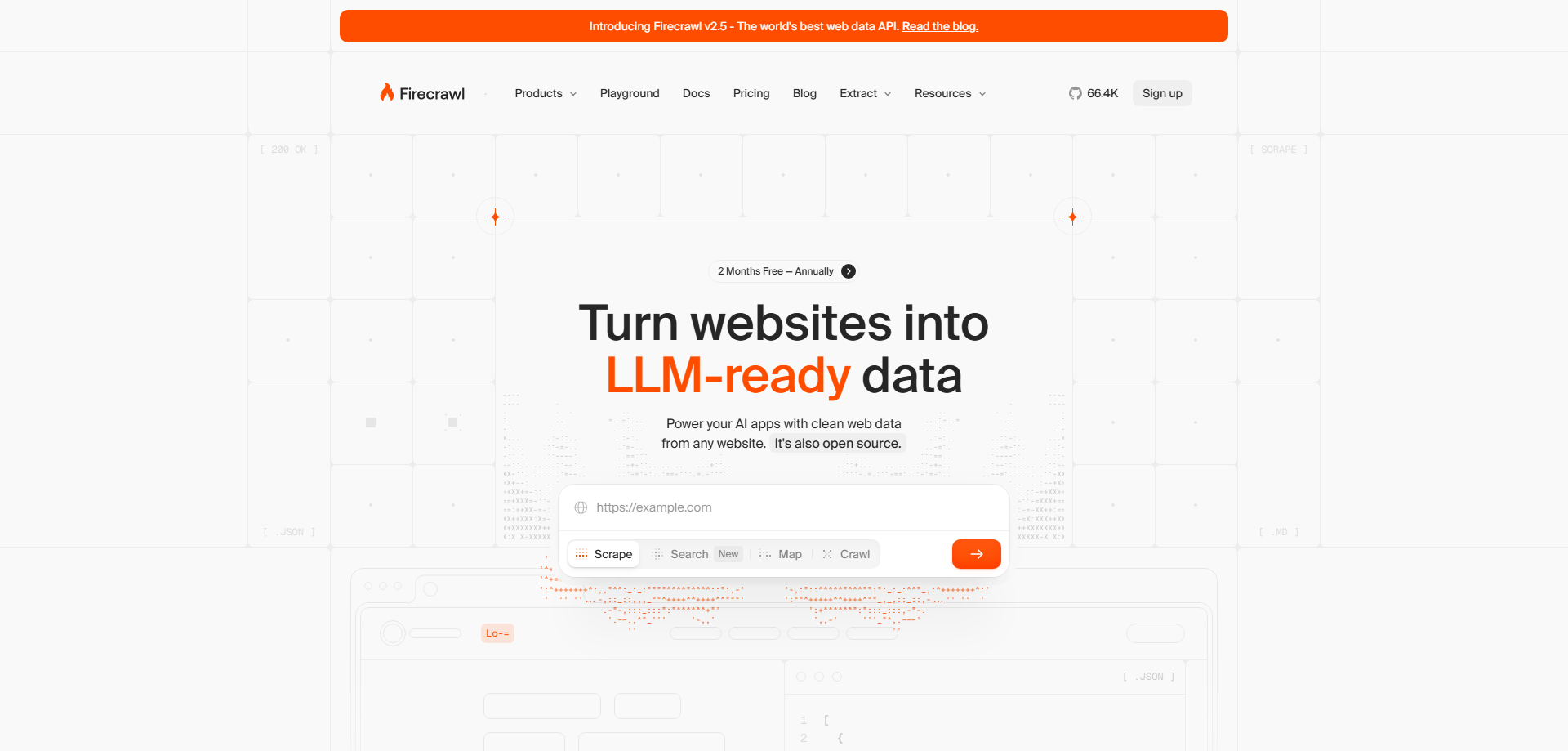1) Creative angle: how I turn chaotic pages into clean, structured data
When I’m on a deadline, Firecrawl v2.5 feels like a tidy-minded research partner. I point its /scrape, /search, or /crawl endpoint at messy sources—PDFs, table-heavy pages, multi-page docs—and it hands me neat, structured data that my models and dashboards actually understand. The new Semantic Index plus a custom browser stack means web parsing is less brittle, so I can focus on ideas, not selectors.
My “creative data” loop now looks like this:
- Explore with /search to map a topic or site section, then shortlist targets.
- Extract with /scrape for precise data extraction (copy, tables, links, metadata).
- Scale with /crawl when I need a lightweight web crawler to sweep sections and normalize results.
- Compose: feed the cleaned corpus to my LLM as AI agent data for summaries, comparisons, and alerts.
Because it handles PDF data conversion and table extraction out of the box, I can stitch together narratives from annual reports, pricing pages, and documentation—without wrangling ten different tools.
2) Disruptive angle: could it replace my current scraping stack?
Mostly, yes. I’ve been that person juggling headless browsers, parsers, PDF libraries, and cron jobs. Firecrawl compresses that sprawl into one AI data API with smarter defaults. For 80% of work—web scraping, data extraction, PDF data conversion, and routine web parsing—I just call the endpoints and move on.
What it replaces for me:
- Ad-hoc Selenium/Playwright scripts for crawl + extract.
- PDF parsing toolchains for table extraction and text cleanup.
- Glue code to normalize output for downstream AI agent data.
Where I’ll still keep other tools:
- Very high-volume crawling at search-engine scale.
- Deep, custom ETL or warehouse modeling.
- Niche sites with unusual auth or anti-bot constraints.
Net-net, for product research, competitive tracking, analyst work, and agent pipelines, Firecrawl v2.5 is a practical default.
3) Exact-need angle: will users actually adopt it?
From what I see, yes—because it meets urgent, specific needs:
- Analysts & growth teams who need clean structured data from shifting web pages, fast.
- Data scientists & LLM engineers who want reliable AI agent data without babysitting fragile scrapers.
- Ops & PMs who just need accurate PDF data conversion and table extraction for reports.
The acceptance drivers are simple: one API, sane output, fewer moving parts. A typical day for me:
- Track e-commerce pricing with /crawl, then dump normalized rows into my BI.
- Use /search to locate new docs across a vendor’s site; /scrape the best matches.
- Convert a 120-page PDF into tidy sections for RAG in minutes, not days.
- Refresh a knowledge base weekly so my agents answer with current facts.
Even the Product Hunt signal (324 upvotes, 20 discussions) suggests there’s real demand for a stable web scraping layer that isn’t cobbled together.
4) 12-month survival score: 4.2 / 5 stars
Verdict: Strong chance Firecrawl v2.5 thrives this year. It hits the sweet spot: dependable data extraction, smart web parsing, and agent-ready output in one AI data API.
Opportunities
- Deeper site-aware Semantic Index for better recall and deduplication.
- First-class exports (NDJSON/Parquet), lineage, and quality metrics for analytics teams.
- Playbooks for common jobs (pricing watch, fund filings, vendor docs) to speed time-to-value.
- Agent tooling: auto-chunking and citations optimized for AI agent data pipelines.
Risks
- Anti-bot & layout churn: sites change; reliability must keep pace.
- Compliance: honoring robots.txt, ToS, and data-use rules across regions.
- Throughput limits: heavy web crawler use may need queueing and backoff.
- Edge formats: exotic PDFs and embedded tables can still trip extraction.
What would lift it to 4.6–4.8? Transparent rate/health dashboards, source-aware diffing, stronger table heuristics, turnkey RAG connectors, and project-level access controls.
Why I’m using it
I want fewer tools and cleaner outcomes. Firecrawl v2.5 gives me reliable web scraping, accurate data extraction, painless PDF data conversion, and solid table extraction through a single AI data API. I spend my time analyzing structured results—not fixing brittle scripts—and my AI agent data stays fresh enough to trust.









